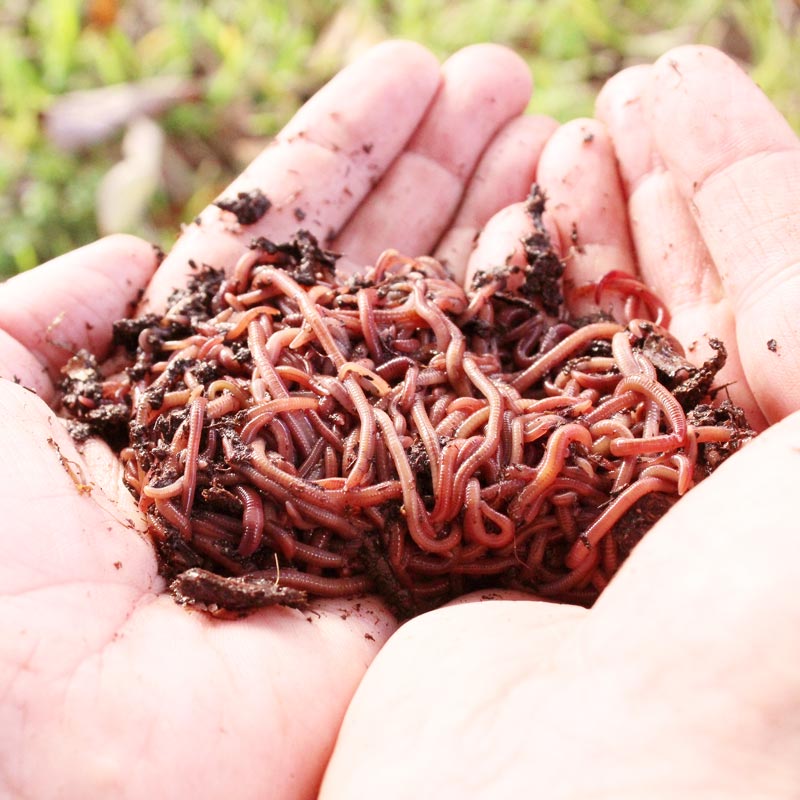The Secret to Lush Lawns Starts with Red Wiggler Express Lawn Care Services
The Secret to Lush Lawns Starts with Red Wiggler Express Lawn Care Services
Blog Article
How Red Wigglers Can Change Your Composting Experience
The combination of red wigglers right into composting methods uses a transformative method to lose monitoring and soil enrichment. These microorganisms not just expedite the decomposition process however likewise create nutrient-dense vermicompost that enhances soil health and wellness and fertility. Their adaptability to various settings makes them a suitable alternative for both amateur and seasoned composters alike. Nonetheless, comprehending the particular requirements and benefits related to keeping a flourishing worm populace is vital for optimizing their potential. What methods can one utilize to ensure a successful vermicomposting experience?
Benefits of Red Wigglers
Red wigglers, scientifically known as Eisenia fetida, are a cornerstone of reliable composting systems because of their amazing ability to decompose organic matter successfully. These worms master changing kitchen area scraps, lawn waste, and various other organic materials right into nutrient-rich garden compost, typically referred to as worm castings. Lake Hickory Bait. This procedure not only decreases landfill waste yet likewise adds to sustainable horticulture methods
One of the key benefits of red wigglers is their high recreation rate, enabling them to inhabit a composting atmosphere quickly. This fast multiplication boosts decay rates, causing faster garden compost manufacturing. Furthermore, red wigglers thrive in a varied variety of problems, making them adaptable to various composting arrangements.

Establishing Up Your Worm Container
(Red Wiggler Express)To develop an effective worm container for composting, mindful attention needs to be provided to its style and setting. A suitable worm container ought to be created of products that are resilient yet permit essential air movement, such as plastic or wood. The dimension of the container can vary, yet a volume of around 1 square foot per extra pound of worms is a good starting point.
Ensure that the container has water drainage holes to avoid water buildup, which can bring about anaerobic conditions destructive to the worms. Additionally, incorporating ventilation holes will assist preserve correct humidity levels and oxygen flow.
Next, it is vital to give bed linen for the worms, which can consist of shredded paper, cardboard, or coconut coir. This bed linen not just uses an environment for the worms yet also aids in moisture retention.
Position the worm bin in a location that maintains a temperature variety of 55-77 ° F(13-25 ° C) to optimize worm activity. Avoid placing the bin in straight sunlight or severe temperature levels. By adhering to these standards, you can develop a helpful atmosphere for red wigglers, improving the effectiveness of your composting process.
What to Feed Your Worms

(Lake Rhodhiss Bait)Red wigglers specifically delight in soft, damp foods like watermelon rinds, cucumber peels, and banana peels. It is essential to avoid feeding them citrus fruits, onions, and garlic, as these can be detrimental to their health. Furthermore, cooked foods, milk products, and meat ought to be strictly stayed clear of, as they can cause odors and bring in insects.
Providing a consistent feeding routine will aid keep your worm populace flourishing while improving the overall efficiency of your composting efforts. By comprehending what to feed your worms, you lay the groundwork for a successful and sustainable composting experience.
Keeping a Healthy And Balanced Habitat
Producing a flourishing composting environment for red wigglers requires attention to their habitat, as it straight influences their health and efficiency. The excellent habitat ought to keep a balanced moisture degree, usually between 60-70%. Excessive moisture can lead to anaerobic conditions, while not enough wetness may dry out the worms.

The bedding product in the compost must be varied description and shredded, including products like cardboard, paper, and coconut coir. This not only offers a comfortable atmosphere but additionally acts as a food resource. Lake Hickory Bait. Consistently looking for smells or signs of parasites can help determine possible issues prior to they intensify
Lastly, keeping a balanced pH level, preferably in between 6 and 7, makes certain a favorable habitat for red wigglers, cultivating their capability to procedure natural issue effectively. By dealing with these aspects, you can develop a lasting and productive composting environment.
Harvesting and Using Garden Compost
Collecting compost from a worm bin is a gratifying procedure that changes organic waste right into nutrient-rich material for gardens and plants. As soon as the composting cycle is total, normally after 8-12 weeks, it's time to collect the vermicompost. The primary step entails separating the red wigglers from the ended up compost. This can be done making use of approaches such as the "light" method, where worms are brought in to light and can be scooped away from the top layers, or by moving the compost to one side of the container and including fresh bed linen to the opposite, urging the worms to move.
Once the worms are removed, the continuing to be garden compost can be sorted to get rid of any kind of larger particles or undecomposed material. This abundant garden compost can be used straight to garden beds, mixed right into potting dirt, or utilized as a top dressing for potted plants.
Verdict
Including red wigglers into composting techniques substantially boosts the decay procedure and contributes to the manufacturing of nutrient-rich vermicompost. The resulting worm spreadings enhance soil framework, fertility, and microbial activity, eventually promoting healthier plant development.
Report this page